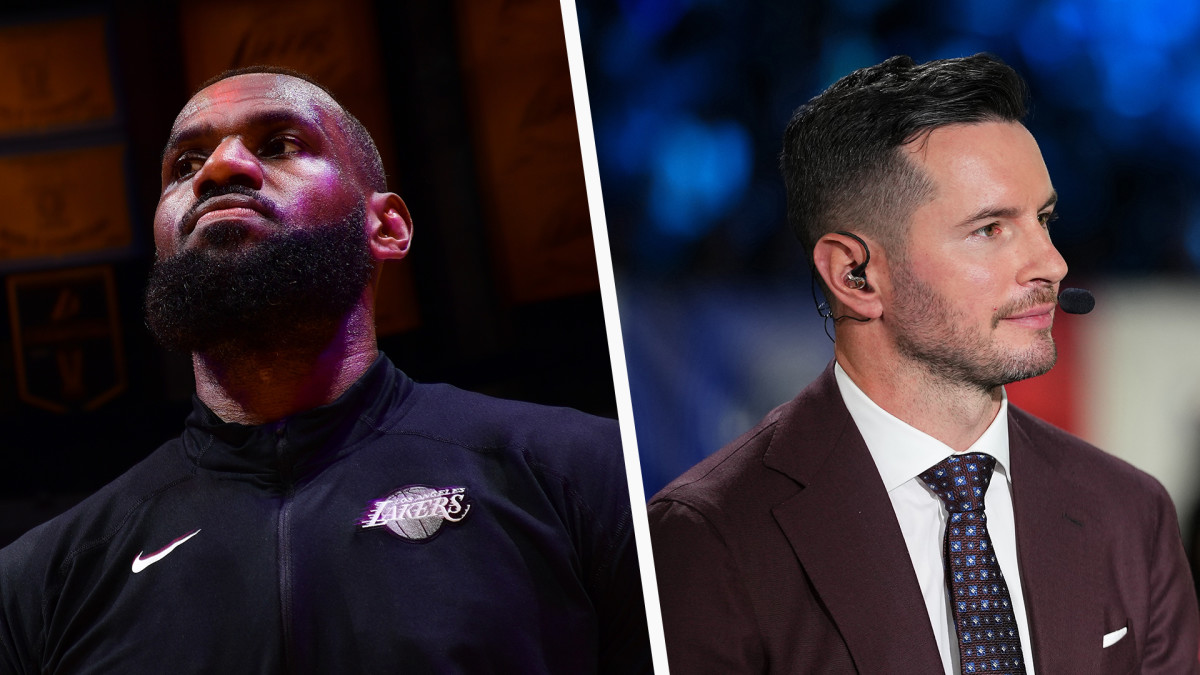
For the first time in history, more people watched the NCAA Women's College Basketball Final than the Men's Final.
Four million more people at that.
It was an unprecedented rise for Women's college basketball as nearly 19 million people watched the South Carolina Gamecocks defeat the Iowa Hawkeyes just two years after it fell short of breaching five million viewers.
It's no secret that Iowa's Caitlin Clark has driven that success — so much so that Dawn Staley, the coach of the championship winning Gamecocks thanked Clark on live television after the game.
Many have theorized that one reason for the success of the Women's game compared to the Men's game is that the Women are staying in college longer. Two massive names who are bringing up this theory are NBA star LeBron James and ESPN broadcaster JJ Redick.
The two spoke on the "Mind The Game" podcast released on Tuesday, April 9 about the lack of cache and emotional attachment that Men's top college basketball players have with their fan bases because of how quickly they can turn professional.
"[The men] have the ability to go to the NBA right after our freshman year," said James, who was drafted into the NBA straight of high school. "In the women's game, you have the ability to build your legacy and build your rapport and brand with that fan base, with that community."
Related: JJ Redick reveals his biggest issue with basketball media
James cited the example of Clark, who played four years at Iowa, then also mentioned past stars like Sue Bird, Diana Taurasi, Candace Parker, Kelsey Plum, and Chamique Holdsclaw as names who stayed a long time and built a connection with their schools.
"You're watching these girls year after year after year continue to grow," James said. "So when you get a popular basketball player... to stay on campus three or four years, I think has a lot to do with the popularity of their sport."
Redick added that he believes this has led to there being "no more icons" in Men's college basketball.
"As much as I love the team aspect of basketball period, I think the Women's game right now, particularly in college, has more icons," Redick said.
The NBA enforced what is known as the "one-and-done rule" in 2005, raising the draft eligibility age to 19-years-old during the year of the draft and requiring that local players be a year removed from their high school graduation during their draft year.
This removed the option of drafting players out of high school, but also made it more enticing for highly-touted college prospects to leave school after just one season.
James said that prior to the rule, he recalls watching many icons in the college game like Allen Iverson that stayed for at least a few years.
"Yea, you watched because you had a love for that program, but you also watched because they had certain icons," James said.
Related: Caitlin Clark and Angel Reese NIL value tops women's college basketball
One of the icons James also mentioned was siting across from him — that being Redick, who is considered one of the greatest players in the history of Duke.
Redick wrapped up the conversation by looking at the big picture of the rise of Women's basketball. He looked at the history of Men's and Women's Basketball, mentioning how Men's Basketball was in the Olympics 40 years prior to Women's Basketball, how the NBA was established about 50 years prior to the WNBA, and that the first NCAA Women's Tournament only started in 1983.
This was all to lead up to his point that while the Women's game has not had the popularity of the Men's game over the last few years, it's because of time and not quality. And he expects the Women's game to keep growing as time goes on.
"It's just time and progress — it's inevitable," Redick said. "These players are so talented. It's only going to better. So this surge we're seeing, it's the trend."
Related: More people watched Women's NCAA Final than the Men's for first time ever







